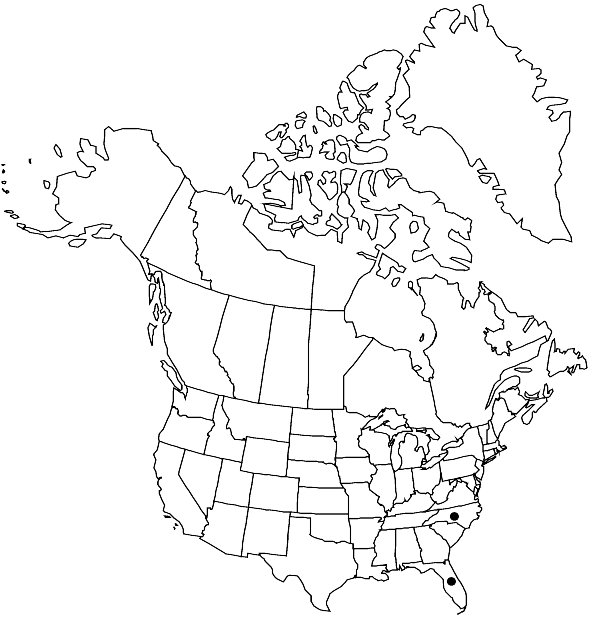Campylopus carolinae
Moss Fl. N. Amer. 1: 249, plate 122. 1939,.
Plants usually less than 1 cm, in loose mats, dark green to brownish green or blackish; leaves erect-patent; stems sparsely tomentose. Leaves 2.5–4 mm, small, lanceolate, ending in a concolorous straight tip, convolute in the distal part, with entire margins; alar cells not or only slightly differentiated; basal laminal cells rectangular, firm-walled, hyaline, 2.5–3.5:1, indistinctly bordered at margins; distal laminal cells oblique to oval, incrassate, ca. 3–5:1; costa filling 1/3 of leaf width, excurrent in a straight, toothed, hyaline point, in transverse section showing abaxial and adaxial stereids, ridged abaxially with prominent cells. Specialized asexual reproduction occasionally by means of deciduous stem tips. Sporophytes not known in area of the flora.
Habitat: Typically buried in white sand in depressions, in open pine and pine-oak forests and open grassland, coastal lowlands
Elevation: low elevations
Distribution

Fla., N.C., South America (Brazil).
Discussion
The disjunction for Campylopus carolinae of western South America–southeastern North America is also found for C. angustiretis, C. surinamensis and C. pyriformis, which grow in similar habitats in white sand. The type material from Brunswick, North Carolina is mixed with C. surinamensis, which caused confusion and recognition of this species as a variety of C. delicatulus R. S. Williams (= C. angustiretis).
Selected References
None.